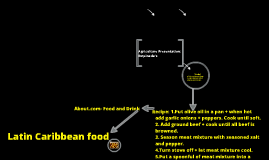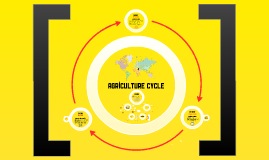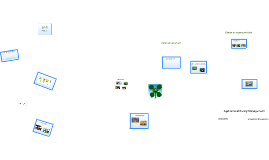Agriculture Presentation
Transcript: 44% of Canda's crop production comes from Saskatchewan Bio-security has become more important as well so that the industry may continue to thrive in Saskatchewan. There are many varieties of crops grown in Saskatchewan. Wheat is one of the most commonly found among them. This crop is grown throughout Canada, but the major area is in the western Prairie region. Average annual production of all types of wheat in Canada from 1997-2001 was around 24.5 million tons.Several different types of wheat are grown in Saskatchewan. Farmers have to invest in large portions of land and expensive equipment Farming has become larger for one key reason: The percentage of farmers in Canada is 2% of our population. This means that those few people are working to feed and support the other 98% of the population The Chinese Academy of Agricultural Sciences (CAAS) possibly has the highest investment in the world for biotech wheat. They are developing a wide range of traits such as resistance to yellow mosaic virus, head scab, powdery mildew, and insect. A wheat line with resistance to yellow mosaic virus is expected to be available in the market by 2015. The Henan Agricultural University is also developing sprouting-tolerant wheat, to get rid of the 20% loss in production due to early sprouting. This was expected to be commercially available by 2012 or 2013. Wheat is also being developed to be safe for people with celiac disease, which is caused by the consumption of gluten that leads to damage to the small intestine resulting in obstructed absorption of nutrients from food, and hence malnutrition. Washington State University (WSU) is currently conducting experiments using genetic techniques to remove the celiac-causing gliadins in the wheat grain with improved baking quality traits. The variety is also expected to contain more lysine, an essential amino acid that is usually scarce in wheat Wheat plants undergo the tillering, jointing, boot, and heading and flowering phases before becoming fully ripe. Agriculture of Saskatchewan Wheat is subject to numerous diseases, including bacterial, viral and fungal diseases like rust and bunt. This grain also has a number of pest which can inhibit its growth including the Hessian fly and the Cinch bug. Durum wheat Agriculture in Saskatchewan is the production of various food, feed, or fiber commodities to fulfill domestic and international human and animal sustenance needs. Durum wheat is grown exclusively in the western Prairie region of Canada, and primarily in the province of Saskatchewan. It is planted in spring, from May to June, and harvested from August to October. Durum wheat is the only tetraploid species of wheat of commercial importance that is widely cultivated today. Its high protein content, as well as its strength, make durum good for special uses. It is unusual in that, despite very high protein content, it is low in desirable gluten needed to form a glutinous web necessary for bread to rise. Thus most breads are not made with 100% durum flour. Farming is how a large percentage of the Earth's population gets its food, and Saskatchewan is no exception from this fact. Small farms that produced multiple resources like corn, peas, cows, barley, and chickens have vanished from the industry due to the increasing popularity of specialized farming. Now one farm will have thousands of chickens while the one next door owns acres upon acres of planted barley fields. Elongation of the stems and quick head growth go hand in hand. The individual wheat florets prepare for pollination and fertilization. Up until now, the developing head has been enclosed in a sheath. Now it emerges and a few days later, pollination begins. The pollination of the florets in a head takes about four days. Pollination leads to the formation of kernels. The kernels grow over the course of about a month. Maturity is easy to see because the head changes color from green to amber. Maturation takes about 120 days. Before becoming a farmer, one must understand the science involved and be able to invest time in researching. Wheat is easily grown in soils such as chernozemic soils which have high organic matter levels, gleysolic soils which have high water content, luvisolic, organic, and solonetzic soils. Good moisture and available organic matter is important in producing a healthy crop of wheat. Saskatchewan is Canada's most important grain-producing region, supplying 10% of the world's total exported wheat. Saskatchewan is the world's top exporter of green lentils and chickpeas. Our pulse crop sector has grown into a billion-dollar export industry that employs more than 1,000 people. Tillering refers to wheat plants growing shoots. How many the plant grows depends on its variety and growing conditions. Three is a normal number. These shoots are in addition to the main shoot from which leaves emerged. A fully developed tiller ends up producing grain, but not all tillers will get that far. Tillers that grow at the

















